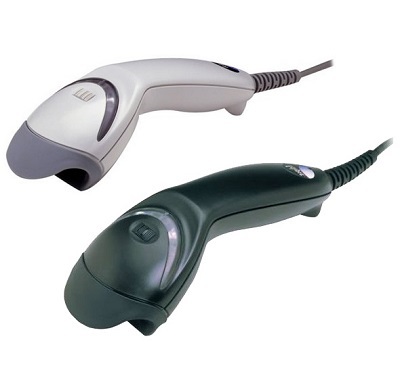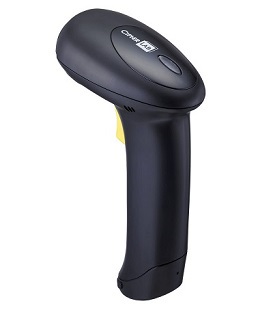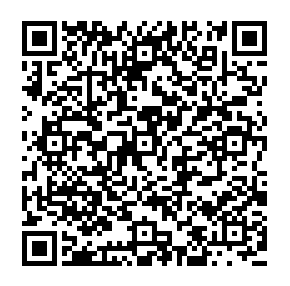Barcode scanners in trade automation
 Barcode scanners occupy a very important place in the segment of equipment for trade automation. At the same time, they are universal in their application and can be used in most other industries: medicine, logistics, inventory management, acceptance and shipment of goods, in the service sector, etc.
Barcode scanners occupy a very important place in the segment of equipment for trade automation. At the same time, they are universal in their application and can be used in most other industries: medicine, logistics, inventory management, acceptance and shipment of goods, in the service sector, etc.Each of us has repeatedly seen this scanner at the store's checkout or at the point of issue of goods. However, not everyone knows how many possibilities a small and simple at first glance device can have.
There are several types of barcode scanners:
')
- wired
- wireless,
- slotted,
- multiplane,
- embedded

Wired scanners are in the budget category. Such devices are purchased for stationary use. The main advantage of wireless scanners is the ability to freely move an employee through the warehouse.
Types of bar codes known to date:
Linear barcodes are a set of strips arranged in one direction.
Linear barcode standards:
- EAN - European (EAN-8 consists of 8 digits, EAN-13 - 13 digits are used),
- UPC (UPC-A, UPC-E),
- Code39,
- Code128 (UPC / EAN-128),
- Codabar
Such CCs can carry unique encrypted product information (up to 30 characters).

Linear barcodes vary in density. Modern models of CipherLab are developing models for reading hard-to-recognize, faded and heavily worn CCs. What to do if the scanner could not identify the barcode? Remember the place in the supermarket, the cherished goods are at the checkout, but the HQ is not readable. As an option, you can drive numbers manually into the database and get information about the product.
However, if the goods are assigned an encrypted Code39 code - the cashier will not be able to enter the numbers manually.

For automation of trade, a high-quality scanner is needed, preferably with a laser reader and support for all basic standards of SC (if we are talking about linear bar codes). Good equipment will avoid temporary losses in the process.


The most popular EAN means European Article Numbering or European Article Numbering. Distinguish EAN-8 for encryption of small goods or EAN-13 (for large). Encryption on this system means unification. European standardization implies the introduction of information about the country of manufacture, product category, date of manufacture. A barcode is a cipher that contains all the necessary information about a product, where and when it is produced, to which group it belongs. For customs, it is very important. Since commodity groups differ in excise taxes, etc. Products from the USA, for example, are labeled as UPC-E.
Two-dimensional bar codes contain much more information than linear ones. Decoding in 2 dimensions - horizontally and vertically. This type of HQ appeared relatively recently, a little more than 10 years ago. So first appeared multi-level, and then the matrix barcodes. Multi-level were built on the principle of superposition of several linear to each other. Matrix covers the encoding both vertically and horizontally. They are more reliable and secure, which allows them to be used in banking for encrypting unique certificates, documents, key assignments.
2D barcode standards:
- Aztec Code;
- Data Matrix;
- MaxiCode;
- PDF417;
- QR code;
- Microsoft Tag
An example of a two-dimensional bar code.

The advantages of a 2D scanner can be considered more informative. Instead of the maximum 30 characters linear, you can encrypt the whole message for 2000 characters or more!
Barcode Reader Types
There are 3 types of readers that are installed on wired and wireless barcode scanners. Let us dwell in more detail on each of them.
- LED.
Scanners with LED readers are in the budget category. The principle of their work is to use the red LED as a source of radiation. In most cases, the minimum resolution is 3 mil (7.62 microns).
One of the most successful models of the CipherLab 1500 is an LED scanner with a read range of up to 35 cm (depending on the type, contrast and density of the CC). Among the wireless scanners with LED readers can be noted CipherLab 1560. - Laser
The advantage of laser readers is the ability to work with non-contrast, poorly recognizable and worn bar codes. In contrast to LED scanners, such devices have a much higher range (often up to 57 cm), good scanning and decoding speed, and a wide viewing angle in the vertical and horizontal. Laser reader as well as LED are intended only for linear one-dimensional bar codes. Installed on manual wired and wireless models of barcode scanners. - 2d (two-dimensional).
Two-dimensional reader based on the use of a photosensor. The principle of operation is based on the use of an image of a sensor with a high scanning speed (often up to 60 frames per second) and good resolution. 2D scanners easily cope with all known types of bar codes today, which makes them universal in all industries. Among the most popular models can be identified CipherLab 1504, Godex GS550, (manual contact) CipherLab 1564 (wireless).
Application options for scanners in the automation process:
- The budget wired scanner at the supermarket checkout is a familiar element in equipping cash registers. The device is synchronized with the PC and transmits information to the accounting database. Today, the majority of preference is due to universality and simplicity. New versions of software products on the 1C Enterprise platform from versions 1C 8.0 have a simplified integration system. It is enough to connect the equipment and it is recognized automatically.
- Wireless scanners in stock are highly valued due to the built-in amount of memory to collect information. Audible and LED displays inform you of the successful operation. Further, after the work is finished, the scanner must be synchronized with the PC for data exchange. The scanner works autonomously and is not threatened by a power surge. All data is stored in memory.
- Mobile scanners can be used in outdoor and exhibition activities. Not everyone knows about this.Devices with Bluetooth interface are the most promising in terms of functionality. They support work with Android devices. To transfer data, it is enough to synchronize with a mobile device via Bluetooth. Such a scanner paired with a phone or tablet PC can work as a data collection terminal.

 Today , Bluetooth scanners are actively produced and widely used in the automation of trade and warehouse activities. Vivid examples of such models are CipherLab 1860 (ultra-compact, battery-powered scanner that easily fits in a pants pocket) and CipherLab 1560. The first uses a radio base as a signal reception (up to 10 meters), a transponder is provided for the second.
Today , Bluetooth scanners are actively produced and widely used in the automation of trade and warehouse activities. Vivid examples of such models are CipherLab 1860 (ultra-compact, battery-powered scanner that easily fits in a pants pocket) and CipherLab 1560. The first uses a radio base as a signal reception (up to 10 meters), a transponder is provided for the second.- Multiplane scanner in self-service system. The buyer in the supermarket can bring the SK and find out the price, without wasting time searching for the store employee. Scanners work in a contactless mode, that is, you can bring a large product, holding the box with both hands, and read the barcode. The principle of operation is to use scanning beams in different planes.
- Connecting the scanner directly to a barcode printer can be accomplished bypassing a PC or POS system. USB-Hid barcode scanners enable integration between these 2 types of equipment for fast, easy-to-print printing.
- Multi-plane barcode scanners can be used in an access control system. So in various organizations instead of RFID readers are such devices. Visitors or employees can register themselves without waiting for the administrator. Such systems are sometimes found in fitness clubs and other organizations. The client just needs to bring a personal plastic card with the barcode shown on it and enter the premises. The director can enter the base 1C and see information about visitors and time. It is very convenient for keeping statistics, conducting price and marketing policies, etc.

- Barcode scanning from mobile phones.
People actively use mobile devices on Android and iOS and like to store information in electronic form. An alternative to business cards and plastic cards are the new electronic online card systems for visitors.
Barcode scanners can also be used to read QR codes from mobile device screens. The visitor opens the application on the mobile phone, and the administrator reads the SKs directly from the device screen, receiving information about the client, his bonuses, service validity, etc. For iOS, the Passbook service is developed, and for Android - Passwallet .
Such systems can be used in hairdressing salons, car-care centers, beauty salons, educational organizations, etc.
In the case of a barbershop, information about the time and the master who will serve the client is entered on the electronic online card, in the case of attending training courses - about the teacher, group number, etc. At the reception desk, the client presents an electronic card on the screen of the mobile device, and the administrator reads this information using a 2D barcode scanner. At the moment, such technologies are just beginning to be implemented based on the use of two-dimensional codes of QR / AZTEC / PDF417 standards.
Findings:
- Barcode scanners are versatile in operation and differ in many parameters: price, interface, protection class, overall dimensions, range, speed and width of reading, type of reader, etc. However, they all have the same task - to identify the bar code.
- When choosing a barcode scanner, you must first carefully consider the type of reader, taking into account the specifics of the enterprise. All modern models work with 1C and are easy to configure. To synchronize with a PC, you need special software.
- Scanners with Bluetooth - a promising line of equipment in its segment. Scanners differ in interfaces: USB-Hid, USB VCom, KW (keyboard break), RS232. For convenience of connection, the connection of the scanner to a PC or POS monoblock can be made through the stand.
Source: https://habr.com/ru/post/243145/
All Articles